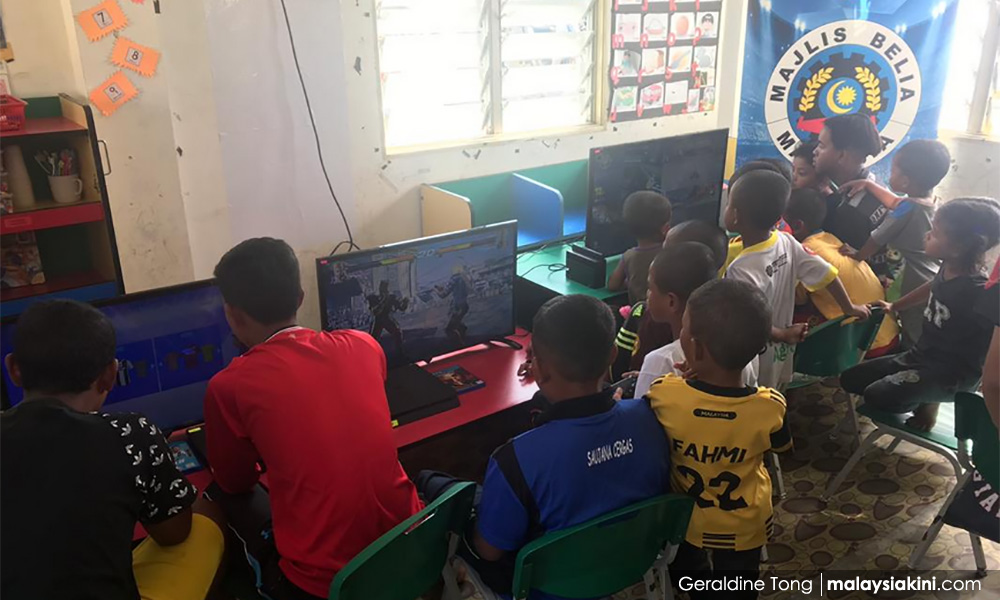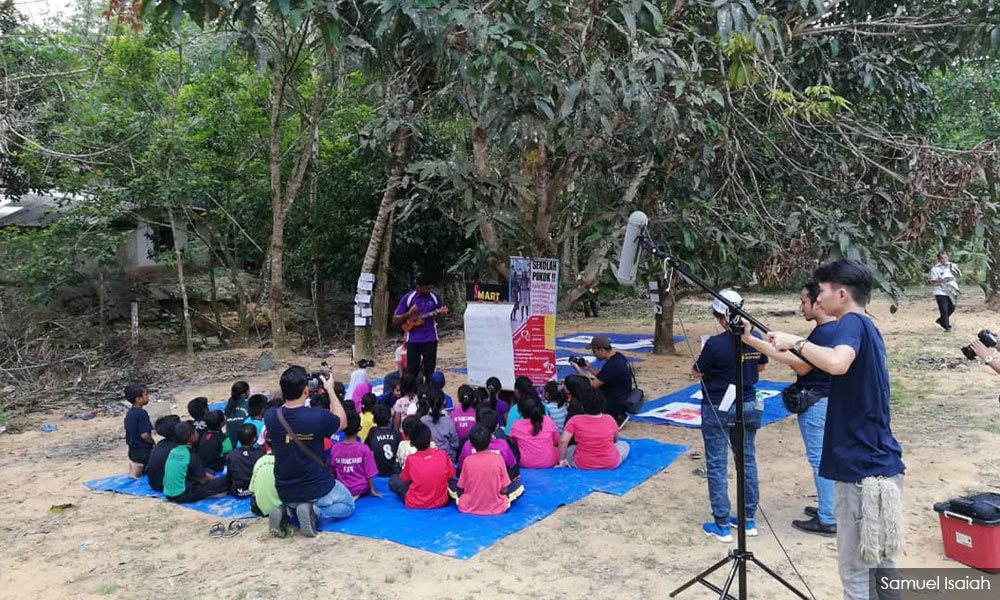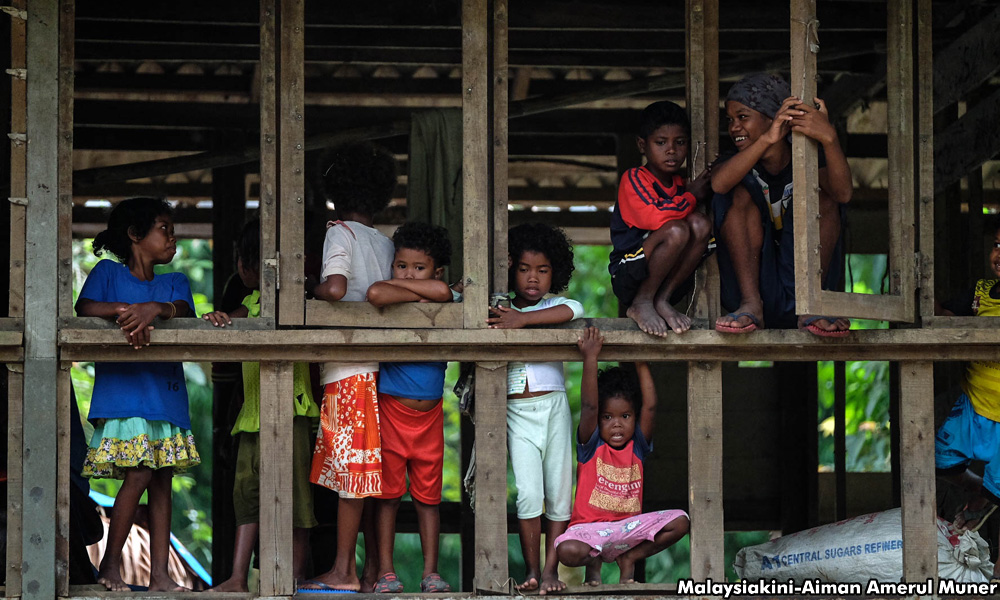COMMENT | The cultural differences between the Orang Asli and non-indigenous children could not be any more different. Orang Asli children are raised in an egalitarian society. Just like the many indigenous communities around the world, the Orang Asli emphasises the collective interests of the community and downplays the idea of individual gain.
These values are at odds with the current national education system, which at its core, is driven by an over-reliance on high-stakes examinations and academic competition. The Orang Asli depend on the passing down of folktales and rich oral history as a form of education, looking to their community leaders and elders for knowledge.
As an Orang Asli with Chinese ancestry, I am extremely fortunate to have studied overseas during the adolescent years of my life, and attain an international-based education here in Malaysia. I grew up in a cosmopolitan environment but my parents have always made it a point to value my roots. School breaks and holidays meant the occasional trips to my family’s Orang Asli villages.
Growing up, I was faced with questions regarding my race and identity, coming from the people I have bonded with, to random strangers. Bordering on cliché, the queries were routinely - "What is an Orang Asli?", "Are you Malay or Chinese?", or "Is there such a thing?" - in response to my claim of being mixed.
This has added to a personal sensation of cultural confusion at times, one that I imagine any other indigenous child must feel, as they attempt to make their mark in an unfamiliar world. Nonetheless, I am lucky to have grown in environments where diversity and cultural sensitivity is welcomed.

Through my experience, I strongly believe that properly accommodating the Orang Asli in mainstream schools will require the advancement of deeper and inclusive cultural understanding in education. Hopefully, nurturing the respect for culture and history in our students will allow for the presence of indigenous people to be normalised, in the classroom and in society.
The Institute of Democracy and Economic Affairs’ (Ideas) Wan Ya Shin released a policy paper on the challenges that Orang Asli children experience in attaining an education. In her publication titled “Education Policies in Overcoming Barriers Faced by Orang Asli Children: Education for All”, Wan highlights how there is a “misalignment of mainstream curriculum and pedagogy to their culture”.
As Orang Asli children are primarily kinesthetic learners and regard classrooms as constrictive, Wan suggests that existing mainstream syllabus should be adjusted through creative means. This can be done by utilising their environment and hands-on learning materials, which promotes interactiveness and exploration, in order to pedagogically suit indigenous culture.
There needs to be variation in the ways we educate our students. During the recent Ideas webinar on “Indigenous Children’s Access to Education: Before & During Covid-19”, Anne Lasimbang of Pacos Trust shared their experience of using ethno-arts in educating indigenous Sabahan children. By allowing children to relate to the environment around them through art, heightened interest was spawned, and the fundamental abilities of reading and basic mathematics came organically.
Similarly, Samuel Isaiah has deservedly made headlines of late for his work and unique solutions on educating the Orang Asli children of SK Runchang, Pahang. By combining poetry, music, technology and Orang Asli culture in his English lessons, "Cikgu Sam" has more than doubled the average pass rate of his students (80 percent from 2013-2017), a far cry from the 30 percent average pass rate when he first started in 2012.

These pedagogical changes towards indigenous children are much-needed to improve their academic performance and instil the principles of lifelong learning. However, I also see the potential in revamping our standardised education system with these elements, in a bid to make it more holistic.
This sentiment is echoed by Wan in her set of policy recommendations, where the current education system overlooks creativity and critical thinking, due to an emphasis on rote-learning. In tending to the needs of indigenous children in education, there is the possibility of shifting away from our grade-driven curriculum and fostering a widespread environment for academic and personal exploration.
In our attempts to accommodate the culture and worldview of the Orang Asli within mainstream education, we have to be wary that the children’s safe familiarisation is also dependent on the learning environment of other students in the classroom.
For instance, the issues of bullying and social isolation towards Orang Asli children can be alleviated by instilling a sense of inclusive cultural appreciation in the curriculum, cultivating a mindset shift that values our differences and cultural diversity.
The recognition of indigenous history and culture in curriculum materials, textbooks and lessons would help greatly. It will allow young students to understand that their indigenous classmates are simply Malaysians just as they are, learning and growing together.
It will allow them to recognise their mark in our nation’s history and growth alongside fellow Malaysians, from their role during the Malayan Emergency, to their contributions to the nation’s agricultural development. It will allow them to respect cultural nuances such as the importance of customary land rights to the Orang Asli, which is bound to their cultural and spiritual identity.

As expressed by Lasimbang in her webinar-concluding remarks, we need to create that relationship and interest with indigenous communities, “so that we become a part of this big family”. In the classroom, this can promote comfort among Orang Asli children in upholding and sharing indigenous culture with others and would add to a better sense of collective understanding among peers from all walks of life.
The general consensus of the Orang Asli is that they are hindered by poverty in anything they do. Hence, education provides them with the best opportunity to break that cycle in order to realise their hopes and dreams.
Empowering the Orang Asli youth through education starts with recognising indigenous cultural uniqueness, adapting to its nuances and proactively creating a learning environment that engages all students to learn through the world around us.
With that in mind, transforming education in Malaysian classrooms to better complement indigenous children will benefit every student in the long-run. We can do better in ensuring that Malaysia’s next generation is educated through inclusive means, can mature into multi-faceted, decent people and is reflective of the cultural diversity our nation brings to the world.
NAZRUL NAZRI is a research intern at the Institute of Democracy and Economic Affairs (Ideas), under their Social Policy Unit.
The views expressed here are those of the author/contributor and do not necessarily represent the views of Malaysiakini.

